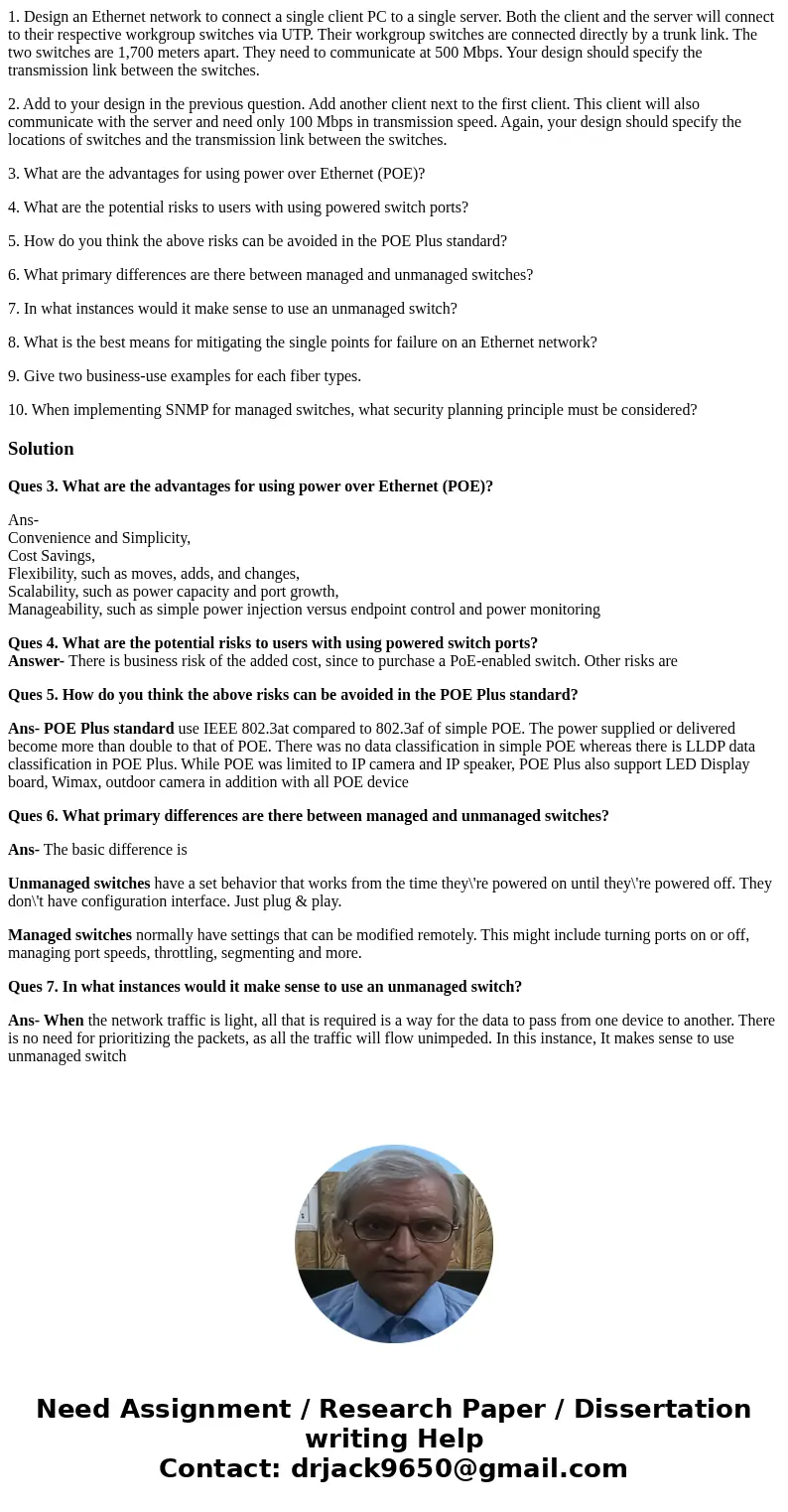1 Design an Ethernet network to connect a single client PC t
1. Design an Ethernet network to connect a single client PC to a single server. Both the client and the server will connect to their respective workgroup switches via UTP. Their workgroup switches are connected directly by a trunk link. The two switches are 1,700 meters apart. They need to communicate at 500 Mbps. Your design should specify the transmission link between the switches.
2. Add to your design in the previous question. Add another client next to the first client. This client will also communicate with the server and need only 100 Mbps in transmission speed. Again, your design should specify the locations of switches and the transmission link between the switches.
3. What are the advantages for using power over Ethernet (POE)?
4. What are the potential risks to users with using powered switch ports?
5. How do you think the above risks can be avoided in the POE Plus standard?
6. What primary differences are there between managed and unmanaged switches?
7. In what instances would it make sense to use an unmanaged switch?
8. What is the best means for mitigating the single points for failure on an Ethernet network?
9. Give two business-use examples for each fiber types.
10. When implementing SNMP for managed switches, what security planning principle must be considered?
Solution
Ques 3. What are the advantages for using power over Ethernet (POE)?
Ans-
Convenience and Simplicity,
Cost Savings,
Flexibility, such as moves, adds, and changes,
Scalability, such as power capacity and port growth,
Manageability, such as simple power injection versus endpoint control and power monitoring
Ques 4. What are the potential risks to users with using powered switch ports?
Answer- There is business risk of the added cost, since to purchase a PoE-enabled switch. Other risks are
Ques 5. How do you think the above risks can be avoided in the POE Plus standard?
Ans- POE Plus standard use IEEE 802.3at compared to 802.3af of simple POE. The power supplied or delivered become more than double to that of POE. There was no data classification in simple POE whereas there is LLDP data classification in POE Plus. While POE was limited to IP camera and IP speaker, POE Plus also support LED Display board, Wimax, outdoor camera in addition with all POE device
Ques 6. What primary differences are there between managed and unmanaged switches?
Ans- The basic difference is
Unmanaged switches have a set behavior that works from the time they\'re powered on until they\'re powered off. They don\'t have configuration interface. Just plug & play.
Managed switches normally have settings that can be modified remotely. This might include turning ports on or off, managing port speeds, throttling, segmenting and more.
Ques 7. In what instances would it make sense to use an unmanaged switch?
Ans- When the network traffic is light, all that is required is a way for the data to pass from one device to another. There is no need for prioritizing the packets, as all the traffic will flow unimpeded. In this instance, It makes sense to use unmanaged switch

 Homework Sourse
Homework Sourse